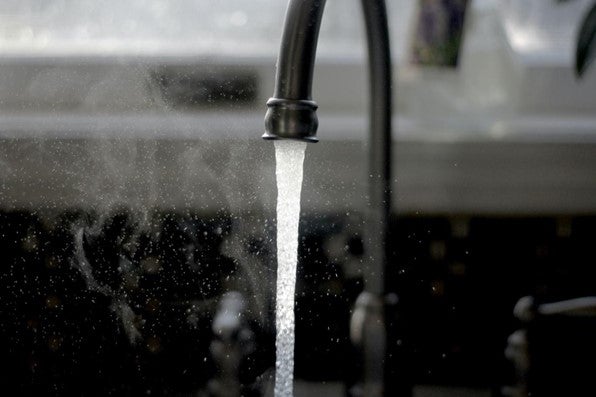How to Winterize Your Vacation Home’s Plumbing?

If you’re like most people, you probably don’t want to think about your vacation home’s plumbing. You just want it to be there when you need it, and not cause any trouble. Luckily, plumbing is a pretty simple system that doesn’t require much maintenance.
However, if your vacation home is in an area with harsh winters or lots of rain (or both), there are some things you can do before the cold months arrive that will make sure your pipes stay warm and dry throughout the year.
In this article, we take a look at some of the steps you can follow to winterize the plumbing of your vacation home. Stay with us for more tips.
Clean the Drains
The first thing you should do is clean the drains. This can be done with a simple cleaning solution and a plunger, but if you don’t have one, it’s okay to use your hands. Just make sure to wear rubber gloves so that nothing gets on them. A little bit of elbow grease will work wonders for removing any build up in the pipes!
Turn off Water Supply to the Pipes
To winterize your pipes, you need to turn off the water supply to them. The easiest way to do this is by shutting off valves near where they enter your home or cabin. You can use a wrench or pliers if needed.
In addition, if you have an indoor swimming pool and/or hot tub, be sure to drain both before leaving for an extended period of time so they don’t freeze over and crack when temperatures drop below freezing outside (32 degrees Fahrenheit).
Pour Antifreeze into the Drains
The best way to prevent freezing is by pouring antifreeze into the drains. This can be done by using a funnel and pouring it directly down the drain, or you can also pour it into an empty soda bottle and then pour that into your drains.
Antifreeze should be poured into each of your home’s drains at least once per year, but if you live in an extremely cold area or have old pipes that haven’t been winterized before, you might want to do this more often than just once per year.
Drain the Pool
When the weather is warm and sunny, you may want to spend your vacation lounging by your pool. But when winter rolls around, it’s time to drain that water and store your equipment for another year.
The first step in winterizing a swimming pool is to remove all leaves and debris from its surface with a skimmer or net. Next, use a pool vacuum to clean out algae and other debris that have collected on the bottom of your pool over time, or hire someone else to do it!
You should also brush off any dirt or mud from walls or floors before draining so as not to contaminate other parts of your plumbing system when refilling next summer (and make sure all filters are cleaned thoroughly).
Dispose of All Grease
Grease interceptors are a good option for disposing of excess kitchen grease. They’re similar to traditional sewer drains but with extra filters at their end that catch food particles before they enter the main sewer line so they don’t clog up your pipes (or those of your neighbors).
The collected waste is periodically emptied out by professionals who specialize in this sort of thing–and who usually charge an arm and leg for their services!
You might also try using one or more separators throughout your home’s plumbing system instead: these devices allow water from sinks and showers to go through normally while keeping solids like soap foam separate until they eventually settle out over time into a black sludge underneath them where they can easily be removed by hand periodically during regular cleaning sessions each week.”
Seal Leaks
You should ideally seal all leaks so that you aren’t losing water when you’re away from the vacation home.
Seal leaks. Plumber’s putty can be used to seal any leaks that you find, and this is especially important in areas where there are high temperatures or humidity.
Replace worn washers. If you have older plumbing, it may be time to replace your washers with new ones to ensure that no water is escaping through loose seals or joints that aren’t sealed properly.
Check hot water pipes for leaks during the winter months when they’re likely to freeze more often than usual and don’t forget about the drains!
Replace Garden Hoses
When you’re winterizing your vacation home’s plumbing, it’s important to replace any garden hoses that are prone to leaks. Garden hoses can be made of different materials and come in a variety of lengths and diameters. You should look for ones with flexible rubber hoses, which are less likely than PVC hoses (which are made from plastic) and may burst under pressure.
Garden hoses come in many colors as well–so if you want some color on your property this winter season, consider adding some bright pink or yellow garden hoses!
Replace Faucets and Fixtures
If you’re lucky enough to own a vacation home in the winter, you’ll want to make sure that everything is prepared for freezing temperatures. The plumbing system can be damaged by freezing temperatures and should be replaced with pipes and faucets that are designed to withstand cold weather.
If possible, replace these items in the fall before the winter season begins so they have time to adjust before being put into use again next spring or summer.
Conclusion
You should be prepared for the worst but not expect it. Plan ahead and take the necessary steps to ensure your plumbing is ready for winter, whether you’re staying in your vacation home or not.
When you think about how much time and money goes into maintaining a vacation home, it’s important to make sure that everything is in working order before heading off on your next adventure!
Call a reliable plumber promptly. If you’re looking for a trusted plumber in New Jersey, call Bob Hoegler Plumbing at 732-595-2078.
RECENT POSTS
categories
Archives
2024
2023
2022
2021
2020
2019
- December (2)
- November (2)
- October (2)
- September (2)
- August (2)
- July (2)
- June (2)
- May (2)
- April (2)
- March (2)
- February (2)
- January (2)

